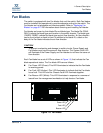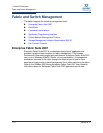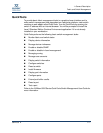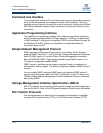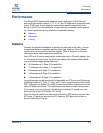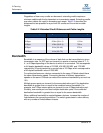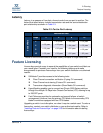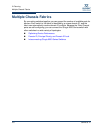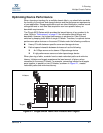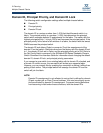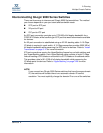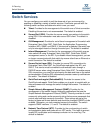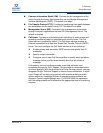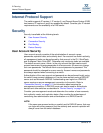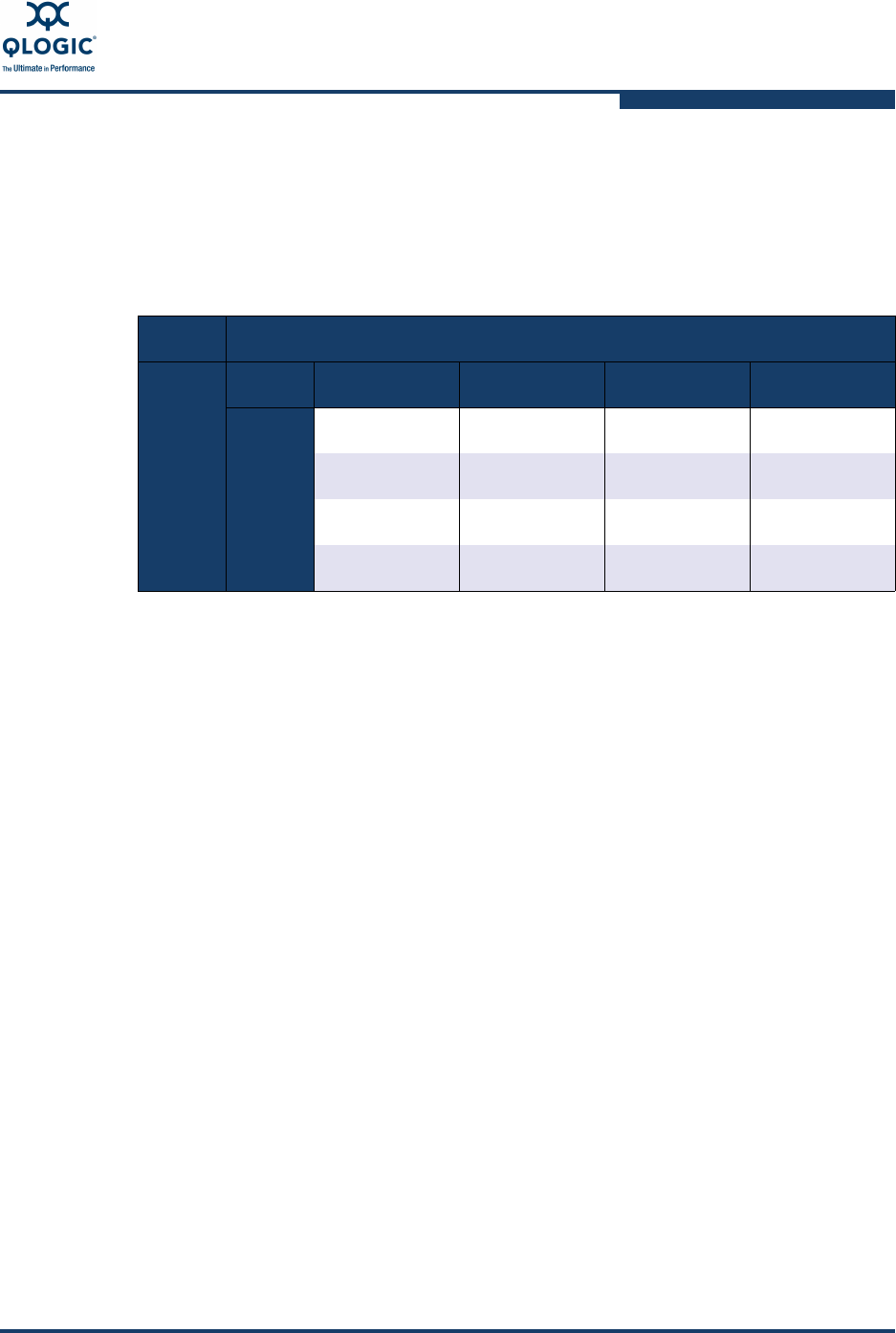
2–Planning
Feature Licensing
59229-05 A 2-5
Latency
Latency is a measure of how fast a frame travels from one port to another. The
factors that affect latency include transmission rate and the source/destination
port relationship as shown in Table 2-3.
Feature Licensing
License keys provide a way to expand the capabilities of your switch and fabric as
your needs grow. Consider your need for the following features and make
arrangements to purchase license keys from your switch distributor or authorized
reseller.
SANdoctor
®
provides access to the following tools:
Fibre Channel connection verification (Fcping CLI command)
Fibre Channel route tracing (Fctrace CLI command)
Transceiver diagnostic information (Show Media CLI command).
HyperStacking enables you to connect two QLogic 9000 Series switches
through the multiple 10-Gbps Inter-Chassis Connectors (ICC) allowing for up
to 256 SFP ports.
Fault Tolerance provides for automatic and manual failover of switch
management functions from the primary CPU blade to the secondary CPU
blade for switches equipped with two CPU blades.
Upgrading a switch is not disruptive, nor does it require a switch reset. To order a
license key, contact your switch distributor or your authorized reseller. Refer to
“Installing Feature License Keys” on page 3-28 for information about installing
license keys.
Table 2-3. Port-to-Port Latency
Destination Rate
Source Rate
Gbps 2 4 8 10
2
< 0.4 µsec
< 0.4 µsec
a
a
Based on minimum frame size of 36 bytes. Latency increases for larger frame sizes.
< 0.6 µsec
1
< 0.4 µsec
1
4
< 0.3 µsec < 0.3 µsec
< 0.4 µsec
1
< 0.3 µsec
1
8
< 0.3 µsec < 0.2 µsec < 0.2 µsec
< 0.2 µsec
1
10
< 0.3 µsec < 0.3 µsec < 0.2 µsec < 0.2 µsec



